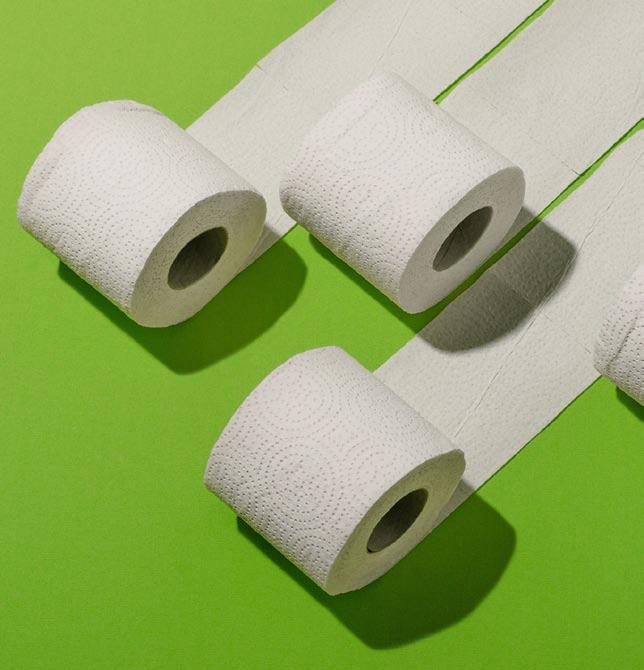
10 minute read
Hoarders vs. Gougers Andrew Fischer
n ndrew Fisc her Hoarders vs. ougers
oilet paper hoarding’s driving the world crazy. So, what’s the best way of combatting it. ur writer comes up with an answer that won’t satisfy everyone
Advertisement
One consequence (there will be others) of the current coronavirus craziness is that petrified consumers are hoarding everything from frozen vegetables to oatmeal to toilet paper. I find it a curious reaction that defies logical explanation, but some are trying:
Stores usually stock two or three days worth of inventory. Customers usually shop for toilet paper every two weeks or so, buying enough to keep them supplied until their next run to the big box store. But the COVID-19 outbreak and the calls for social distancing that followed upended that steady flow of buying and restocking. People started buying more toilet paper, a “buffer stock”… after they were told to prepare for more time at home….”. [1] Psychologists suggest that stockpiling gives people a sense of control when they otherwise feel powerless. We would add that a lack of public leadership at the highest levels only feeds public panic. When it looks like those in charge don’t have a handle on the problem, more than a few people will do the only thing within their power – stockpile for the uncertain times ahead.[2]
[A] perceived scarcity of Charmin is not proof of a global health crisis. It’s only proof that some people are taking an abundance of caution. If someone fears not being able to buy toilet paper, that apprehension can be remedied by buying a lot of it. It’s one of the few things about the current health climate that consumers can control.[3]
On the other side of the coin is the self-righteous MSM braying over alleged “price gouging” when sellers increase their prices during times of scarcity. Somewhere between the two extremes lies a reality that needs to be explored. Let’s take a look …
I see three possibilities for a seller during a crisis-induced purchasing panic: Do nothing, ration inventory or raise prices. Let’s see what happens in each case.
A seller will soon notice that his/her (“his” from now on – I’m pulling a Jordan Peterson and refuse to use grammatically incorrect “their” and “they” forms)
inventory is turbo-jetting off his shelves. He may quickly restock from inventory, but after another wave of super-quick sales he will have to make a choice – reorder now or later. It’s likely that he’ll immediately call his supplier and order more. Let’s stick with toilet paper (if you’ll pardon the mental image), so I can abbreviate it as “TP”. If he’s smart and lucky, our seller will increase his normal order by some multiple and they’ll soon be delivered.
His TP supply restored, our hypothetical entrepreneur goes about his daily business, probably noticing very brisk sales of other items. Soon he notices that his TP inventory again needs to be reordered. This time, however, his supplier informs him that other retailers have been ordering increased quantities of TP and to keep them happy he can only give him half a case. A light bulb pops up over our seller’s head. He realises he will soon be out of TP. Knowing that he has to keep his customers happy, our seller considers the three possibilities noted above:
1. He can do nothing, let his stock run out and put up a sign
that says “temporarily out of TP”, which will likely send his customers to competitors.
2. He can ration his remaining TP, posting a sign that says “one roll per customer”, which will slow the sales of the sought after megarolls but may also lose customers, perhaps permanently. Additionally, he will have to monitor everyone at checkout and remove any extra TP from customers’ baskets, which could create embarrassment and ill will.
3. He can raise the price of toilet paper, perhaps quintupling it. This will drastically slow sales of his remaining TP and alienate his customers. Additionally, he will be reported to the authorities for the “crime” of price gouging. But would all the hue and cry be justified?
Clearly, doing nothing is the worst possible choice for a seller. Customers will search elsewhere for TP (or any product), and if they find it will probably make this new location a replacement for their original favourite store.
Rationing is the best choice, but if many products are being hoarded then enforcement becomes a nightmare. Perhaps UPC codes and associated programming could make it more manageable, but removing excess items from customers’ carts at checkout will result in ugly scenes. Governmentmandated rationing, as in wartime, would likely not sit well with consumers and broadcasts a massive failure of the economic system. Black markets would spring up. Somewhere between these two choices lies raising prices. Due to a crisis, demand increases because, in my opinion, people are afraid that everyone else will “get there” before they do and buy up everything in sight. (We have a winner, folks: italicized explanation #3.) Viewed through the lens of supply and demand, consumers perceive that disruptions in supply are about to occur and they feel they cannot live without certain products. They project the time period of the crisis and its associated elevated demand, calculate how much they can afford to spend, and then rush out to buy those products before everyone else does.
In most cases, if everyone continued their purchases normally there would be no shortages. Consider an impending snowstorm, for example. People flood grocery stores for bread and milk, and shelves are soon empty of these items. But how much bread and milk does, say, a family of four need? A week’s worth? Great, because that’s about how long they’ll stay fresh at home. Why, then, should people buy double or even triple quantities since a snowstorm and its impact usually last only a few days? But people do, and late arrivals to the stores will leave with zero bread and milk thanks to the hoarders (who get a mere slap on the wrist from the MSM).
The current CV-19 situation is somewhat different, since if half the population is forced to stay home there could very well be long term supply disruptions. However, this was not apparent in North America at the onset of the problem, yet panic buying began
almost immediately.
Back to raising prices as a solution to hoarding. What would happen if all sellers doubled or tripled their prices? It’s easy – people would buy less. They would buy only what they really need. Products would be allocated based on supply and demand and most people would get at least some of what they need. Yes, the wealthy would be able to buy more than others lower down on the income/ asset pyramid – but would they? Perhaps, but depending upon your definition of “wealthy” that percentage of the population ranges from the top 1 percent to the top 20 percent. It’s very unlikely that wealthy folks will drag ten shopping carts along and fill them up with cases of TP. Nope, they’ll buy one case per family, enough to last for weeks or months.
Therefore, assuming everyone on the pyramid rushes to stores ASAP, the entire bottom 80 percent has an excellent chance to buy what they actually need and, due to the increased cost, can afford. They will not be able to buy cases of products and hoard them. Thus, raising prices in a crisis is not gouging, but a means of sensibly allocating resources. The additional profit to sellers compensates them for the reduced quantities they have for sale. It’s called supply and demand, people.
Look at the guys who bought tons of hand sanitiser during the current CV-19 emergency, intending to resell them at $70 a bottle. (I can’t imagine paying that much for a non-essential $2 item, but perhaps some rich people might.) Of course they were ruined by Amazon and Ebay as “price gougers”. But who is Amazon – or government, for that matter – to interfere? They simply took an entrepreneur’s chance, which might have worked if at a more realistic selling price – maybe four or five dollars a bottle. The sellers would have soon found an equilibrium point maximising sales and income. Supply and demand. (Note: while hand sanitiser is hardly an essential item, food in general and water are, which is why I won’t consider them here. (I know: cop-out!)
Remember Hurricane Katrina? At least one sharp out-of-state entrepreneur loaded his pickup truck with electric generators and drove down to Mississippi, with the intention of selling them to desperate flood victims at a fair profit. (Look up John Shepperson.) It’s similar to the hand sanitiser situation – an entrepreneur rushed to fulfil a correctly perceived demand. Set the price too high, however, and no generators would be sold. Too low and they’d all sell but it wouldn’t be worth the effort. Bargaining with prospective customers would quickly find the best price for both the seller and his customers. Naturally government authorities refused to let the “price gouger” sell his generators – and actually jailed him for four days. Mississippi authorities thus believed it was better to let willing consumers suffer than let them freely purchase scarce generators at a higher-than-Home Depot price.
(It’s the same with so-called ticket scalpers. The fact that they exist simply proves that event prices are set too low. As showtime gets closer scalpers must lower their prices or get stuck with worthless tickets. Meanwhile, their
prospective customers may not get into the stadium if they wait too long. Again, supply and demand. Scalpers are really just entrepreneurs, taking risks and trying to maximise profits. By the way, the original ticket sellers could easily limit purchases to, say, four per customer to prevent anyone from buying hundreds of tickets.)
Hey, what about Jeff Bezos? It’s a fact that Amazon.com uses “surge pricing”, raising its prices when demand for an item runs hot or supplies of an item run low. Also, absurdly high prices for “only one left in stock” items can readily be found on its website. Amazon also uses “dynamic pricing” to present a higher price to the customer if its algorithms decide he can pay more. Now that’s price gouging! So, in the battle of hoarders vs. gougers, which group is more worthy of our scorn? I vote for the hoarders. CT
Footnotes [1] https://nymag.com/ intelligencer/2020/03/toilet-paperhoarding-why-one-economistsays-not-to-worry.html [2] https://www.dallasnews.com/ opinion/editorials/2020/03/17/ascoronavirus-spreads-hoardingwont-save-you-but-it-willendanger-others [3] https://www.mentalfloss. com/article/620067/coronavirushoarding-toilet-paper
Andrew Fischer is an accountant and author of two books. Purgastories, a collection of short stories, is available at amazon. com. He enjoys his fiancée and designing board games; the latter can be downloaded at no charge from boardgamegeek.com.
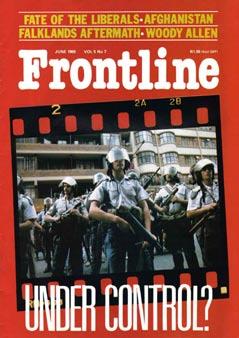













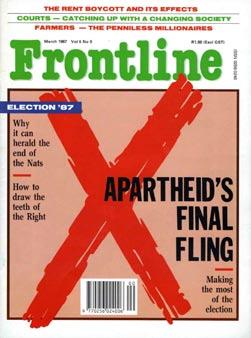
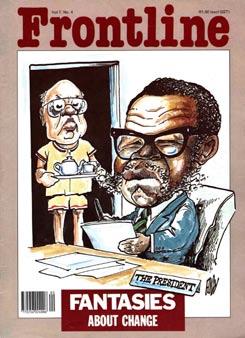
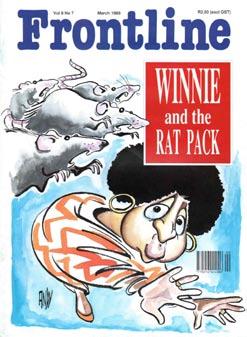
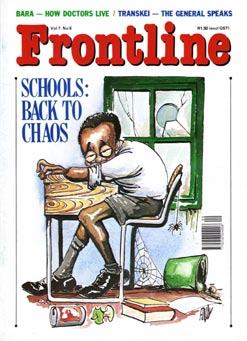

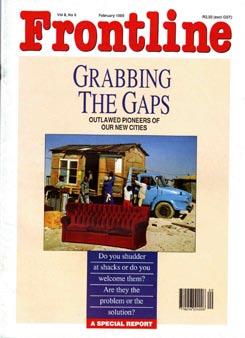
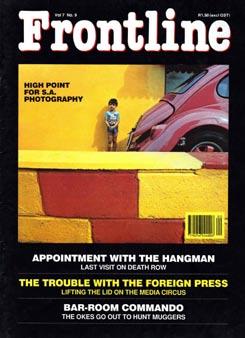
ONE MAGAZINE’S 10-YEAR QUEST FORJUSTICE AND EQUALITY Before I wound up in Toronto and ColdType, I designed Frontline magazine, South Africa’s top liberal-left magazine, for 10 years during the 1980s as it battled for justice and equality during the final years of Apartheid. Now, we’re digitising Frontline, as a case study of prophecy and history. The first digital issues are now on line; more will follow each month. – Tony Sutton, Editor
Read the digital editions of Frontline, exactly as they were published, free of charge, at www.issuu.com/frontline.south









